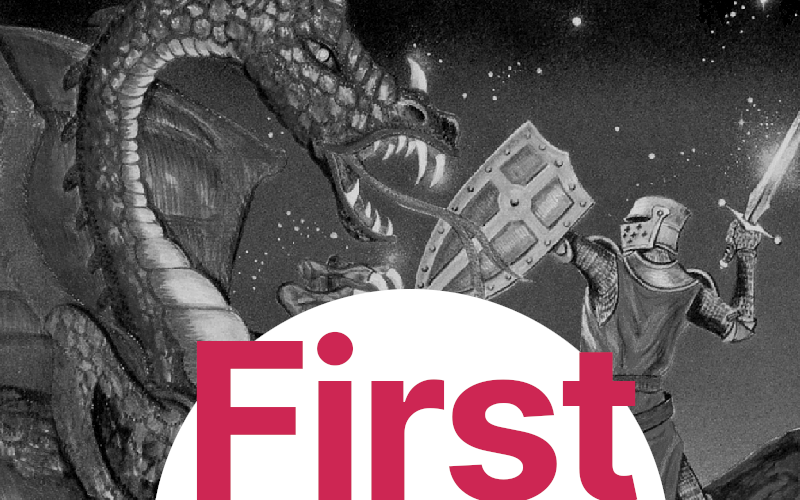How RPGs reached Japan
Dragon Quest (1986) could rightly be described as the first JRPG due to a genre convention, but it wasn’t the first RPG made in Japan. Dragon and Princess (1982) was probably the oldest, though there were various other interesting attempts, including The Black Onyx (1984).



Thank you to Moby Games and Hardcore Gaming 101 for the images.
Why we think of Dragon Quest as the first JRPG
An older term almost synonymous with JRPG (meaning Japanese Role-Playing Game) is “console RPG”. These were more streamlined, accessible and usually came from Japan, whereas “computer RPGs” were played on PCs and recreated more of the complexities of tabletop RPGs.
This helps us understand the place that Dragon Quest had in history. It wasn’t the first RPG from Japan, but it was the first Japanese RPG to work with the strengths and limitations of the NES, Nintendo’s first console, and therefore introduced a new design paradigm that we now think of as the JRPG genre.
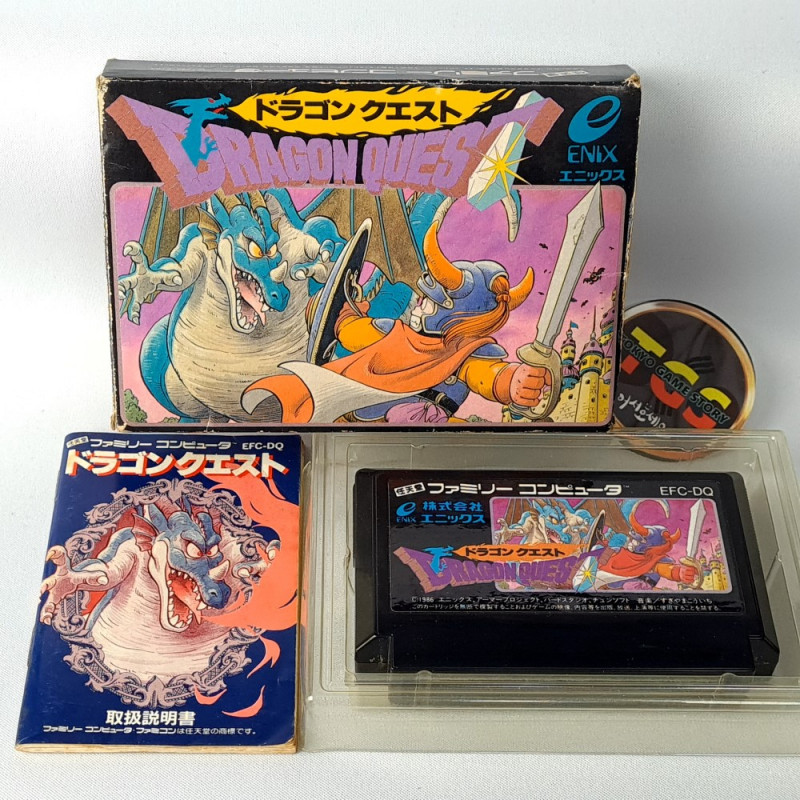
Before Dragon Quest
Much as western CRPGs had a history before Wizardry (almost a pre-history, as it is not always well-documented) in the Dungeons & Dragons-inspired games made for college mainframes, so did Japan have RPGs before Dragon Quest.
Though this period was a short one, the variety found in these experimental early years might surprise you. You’ll also certainly recognise some of the companies involved, because they remain known for JRPGs even today!
How Japan played their early RPGs
The pre-history of JRPGs played out on Japanese personal computers. While the names of personal computers in the US were Apple, Commodore and Atari, things were different overseas.
The first personal computers to take over Japan were the PC-8000 series introduced by the NEC Corporation. They followed it with the upgraded NEC PC-8800 series, or simply “PC-88”, and the lower cost PC-6000 series. Competitors included the Fujitsu FM-7 and the Sharp X1.
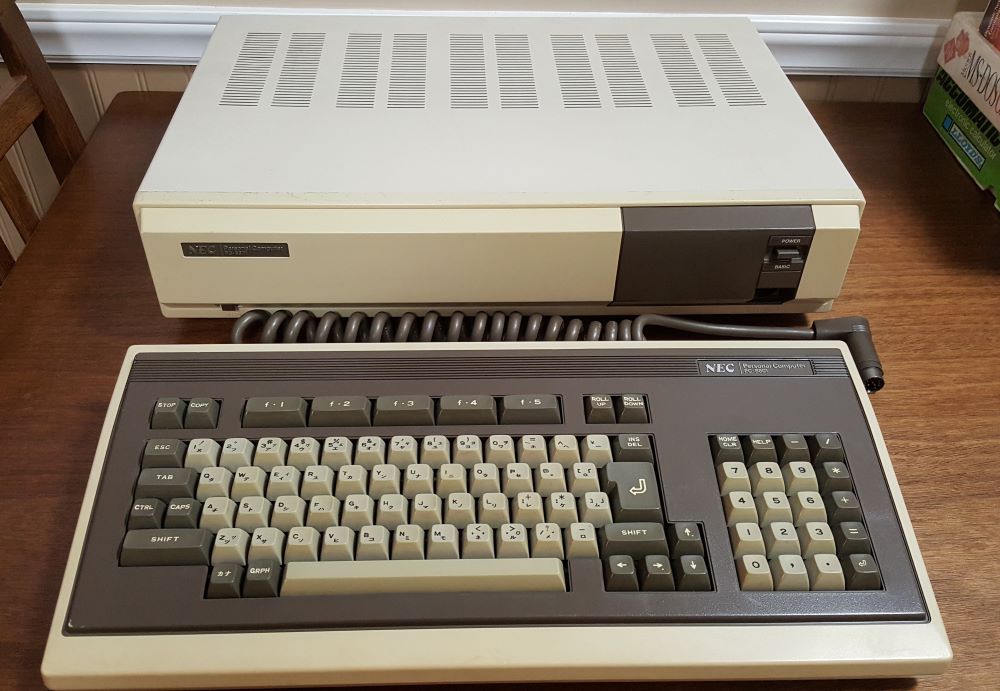
Many games discussed below were ported across this range of computers, but the PC-88 deserves special recognition: it was as important to PC videogaming in Japan as the Apple II was in the US.
How and when RPGs reached Japan
The progenitor of all RPGs is Dungeons & Dragons, published in English in 1974. It was soon known in Japan, but it would be ten years before it was released officially there.
American videogames had a head start, and D&D’s influence there led to Ultima and Wizardry in 1981, but again not in Japan, where it wouldn’t officially be released until 1985.

That gap is the period we are interested in. In this time, the idea of RPGs was making its way across the ocean unofficially: with exchange students, though import businesses, and after holidays abroad.
As this period progressed, Japanese magazines feature more information about Wizardry, Ultima and D&Do, though access to the products themselves was limited:
When I created Hydlide, I had never played any Western games at all. Back then, Japanese people didn’t have a defined sense of the RPG genre. I suspect the creators took the appearance of the RPG as a reference, and constructed new types of games according to their own sensibilities.
Tokihiro Naito, (Japansoft: An Oral History)
The games that emerged in this primordial era sometimes seem conceptually incomplete, but they are fascinating relics.
The company that pioneered JRPGs: Koei?
Best known today for Dynasty Warriors and Nobunaga’s Ambition, fledgling Koei were persistent in their efforts to make RPGs big in Japan.
Koei was formed in 1978 and made programs that automated business functions, but the co-founder, Yoichi Erikawa, was more passionate about games. He programmed a wargame, Battle of Kawanakajima, which became Koei’s first published title.
The board game and war game influence would continue in Koei’s Dragon and Princess, which is best described as a tactical RPG. It was the work of Y. Hayase and Locke, according to the title screen, though to this day we know nothing about these creators.
Dragon and Princess: The first JRPG?
The stat sheet of your heroes in Dragon and Princess is extremely basic, consisting only of Pr and Sp — and nobody seems to know what Sp does. The weapon selection is sparse. Though matching the theme, Dragon and Princess doesn’t much resemble Dragon Quest. Exploration is in the form of a text adventure, and battles occur on a tactical grid.
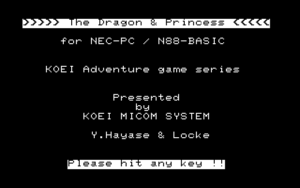

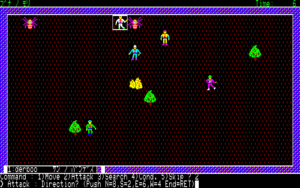
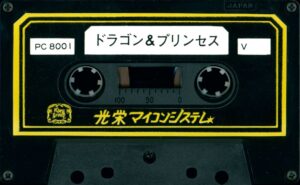
Despite the differences, the spirit of a JRPG seems to be here: it’s an adventure with a party of characters, upgrades for your characters, NPCs and a story about killing a dragon. What more does a JRPG need?
It even has the random encounters that would become a staple of the JRPG genre. Whoever, Y. Hayase and Locke were, they seemed to understand the assignment immediately.
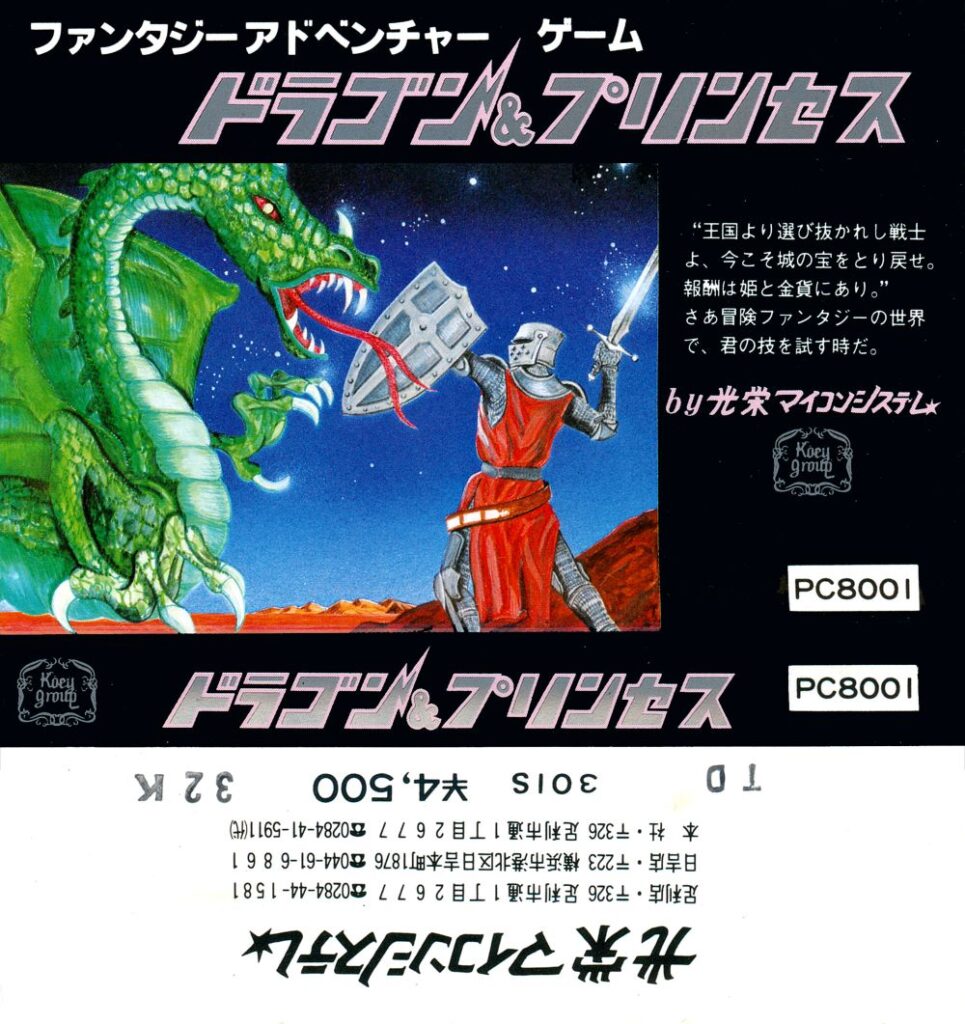
Read more: Dragon and Princess walkthrough from Hardcore Gaming 101
The rest of JRPG prehistory: 1982 to 1984
With Dragon and Princess, Koei had an early start on RPGs, and they didn’t stop there. Another early Koei release was Danchizuma no Yuuwaku (1983).
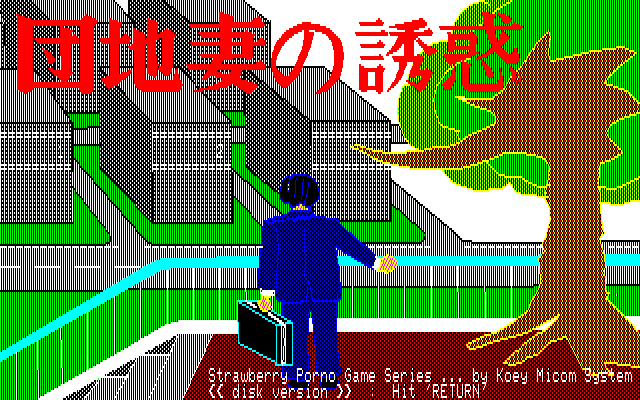
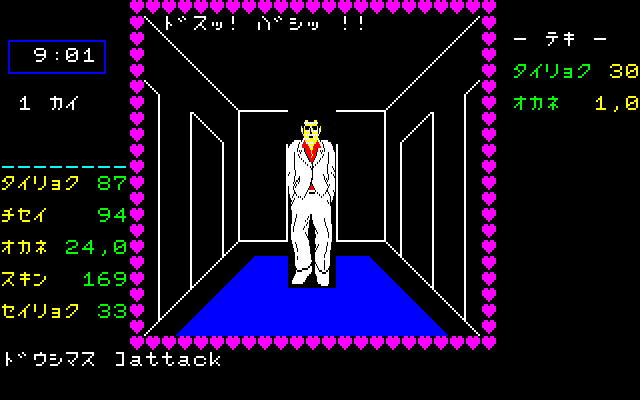
A static screenshot of this game resembles a dungeon crawler, so you might not be able to tell it’s actually an erotic game starring a condom salesman and featuring censored sex scenes. The name translates to something like “Seduction of Apartment Wives”.
Khufu-Oh no Himitsu (lit “Secrets of King Khufu”) saw the player explore a pyramid avoiding traps and killing enemies.
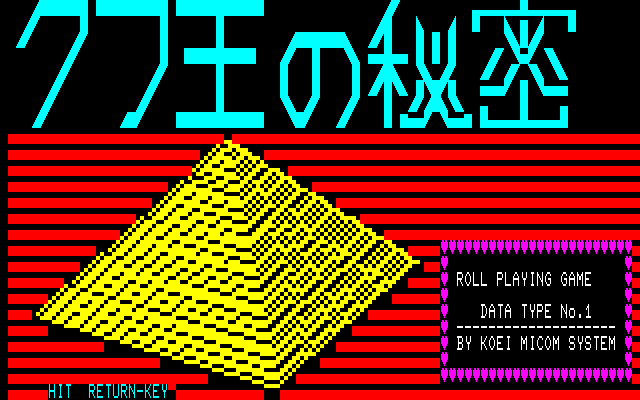

It amusingly had the tagline “A Roll-Playing Game”, which is indicative of the state of affairs at the time: many of the attempts to make an RPG in this period were merely flirtations, programmers circling around the concept RPG but not quite making a full leap into it.
Koei was by no means the only company in this market. Before Dragon Slayer, Legend of Heroes and Ys, Nihon Falcom published Panorama Toh. It had shops, an inn, an overworld, equipment and even wireframe dungeons, though no level-ups and no companions. It evokes Ultima, but might fall closer to the adventure or survival game category.
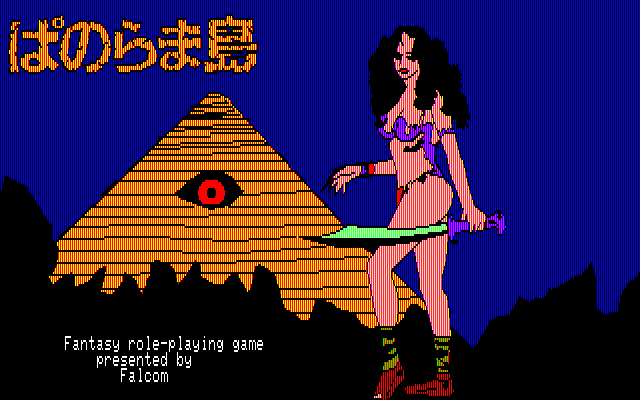
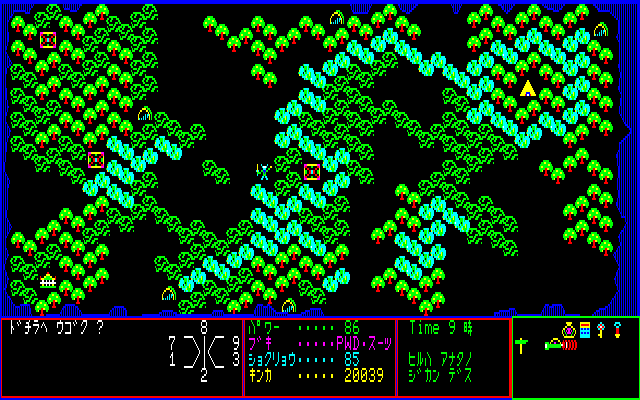
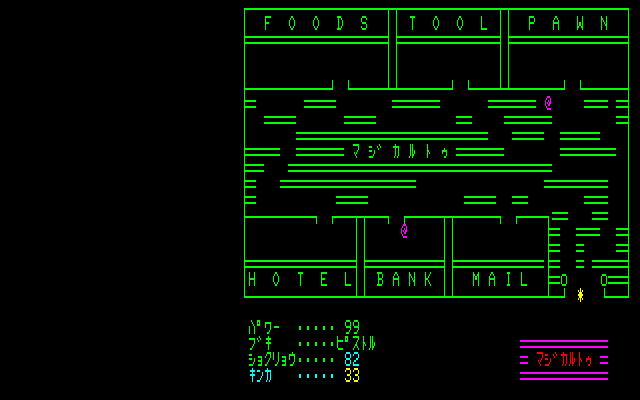

It was a similar story with Enix. Before Dragon Quest, they published Parallel World, described as ““A true role-playing game”.
Back to Koei. Rumours have it Danchizuma (the condom salesman game) was such a success that it helped establish Koei as a videogame company. Perhaps that is the reason they were persistent in their effort to make an RPG.
At least, that is what I imagine led them first to Ken to Mahou, and then to Dungeon.

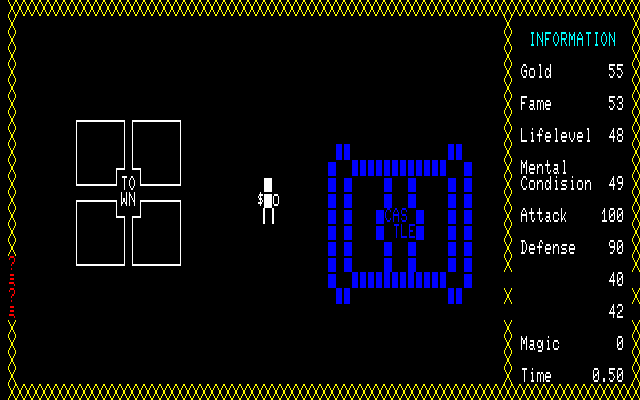
It has been reported that Yoichi Erikawa, the aforementioned founder of Koei and programmer of many of their hits, recognised that Dragon and Princess, Khufu and Danchizuma may not have been true RPGs, but that Ken to Mahou (“Sword and Sorcery”) would be different. It makes a good first impression on this front, offering nine character classes to choose from, including druid and black knight. The world map has a rather unique look to it.
Dungeon achieves even greater accuracy in what it borrows from its inspirations. The tiled world map and cities of Ultima, the wireframe dungeons of Wizardry, and some very traditional Dungeons and Dragons monsters. It is probably the most refined Koei proto-JRPG.
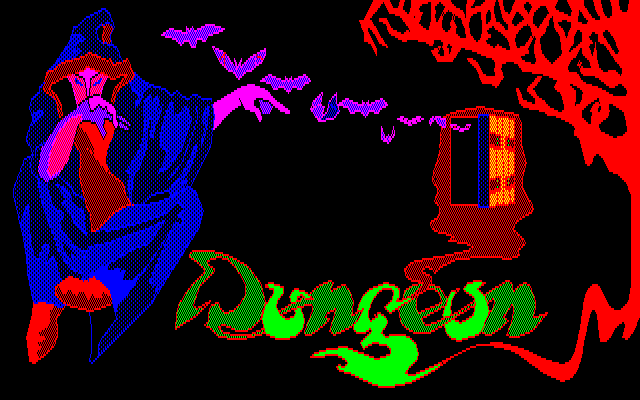

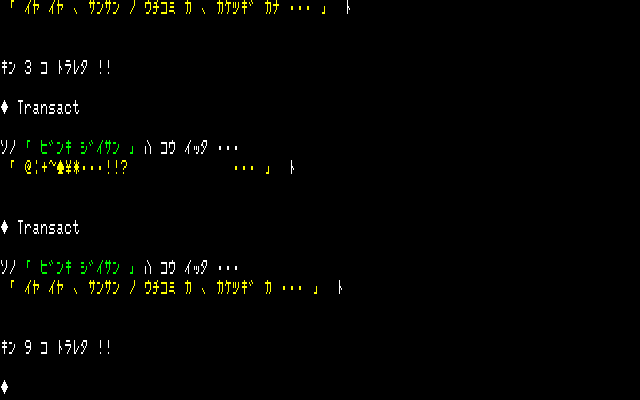
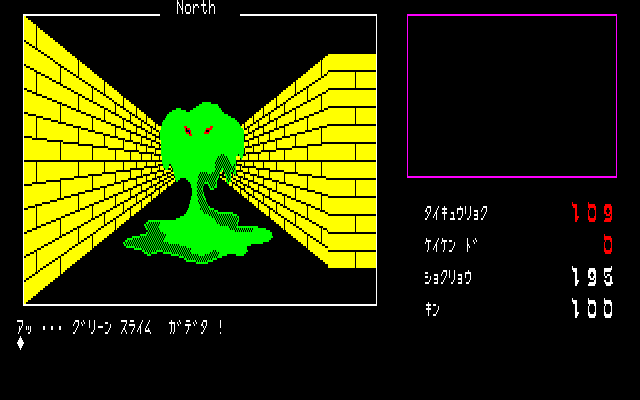
Koei weren’t the only ones who were figuring things out. In September 1983, I/O magazine printed the code for Seiken Densetsu (lit. Legend of Holy Sword), for readers to type into their own computers. When they did, they were treated to an adventure very similar to Ultima, which was later published by Compaq in boxed form.
Ramping up: major developments in 1984
The theme of this article is ideas being slowly, unofficially imported, so let’s continue with probably the two most important importers of RPG ideas into Japan.
At the time, I was in love with The Black Onyx and The Tower of Druaga. So Hydlide was roughly inspired by those.
Tokihiro Naito
The Black Onyx was created by Henk Rogers, who spent half his time at The University of Hawaii playing D&D before moving to Japan. He found the RPGs on sale there were lacking compared to what he was used to, so he programmed his own. While Japan had struggled to get to grips with the idea for a few years now, The Black Onyx pretty much hit the nail on the head. It was simpler than Wizardry, but it included all of the essential parts, except classes (all characters in The Black Onyx must be warriors).
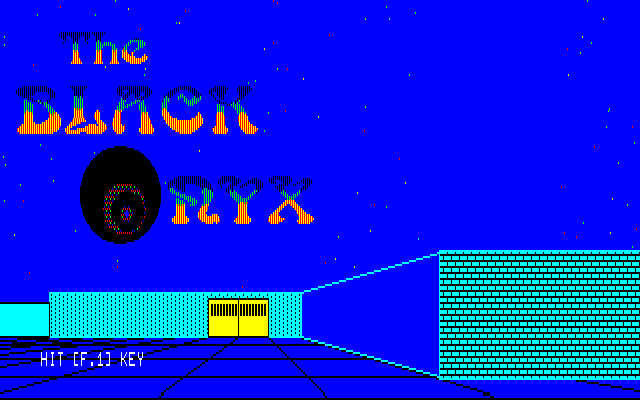
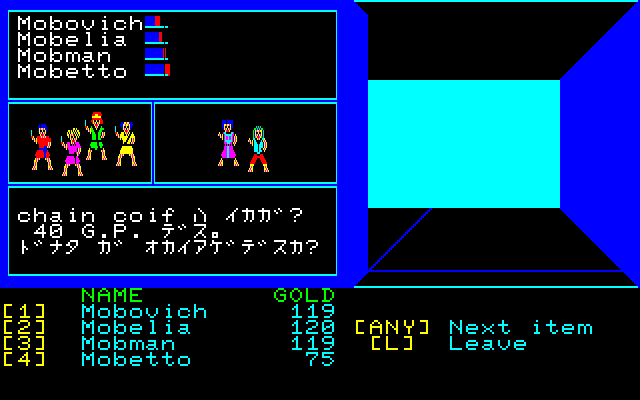
The Tower of Druaga came from somewhere completely different. After creating Xevious (1982), Masanobu Enbo visited America where he played Wizardry. What he enjoyed there he put into his arcade game: the resulting fusion, The Tower of Druaga, was possibly the first action-JRPG. It probably influenced Zelda, and many other RPG creators besides.
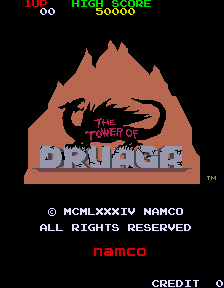

While we might associate Druaga more with The Legend of Zelda than the traditional JRPG genre that would soon be spawned by Dragon Quest, we shouldn’t understate its influence. The third game that Tokihiro Naito mentions in the quote above is Hydlide, released by T&E Soft. Along with Dragon Slayer (Nihon Falcom’s next RPG after Panorama Toh), these two games were the next steps in action-JRPG development.


One more important game released in 1984 was Mugen no Shinzou (“Heart of Fantasy”). It was the closest to a western RPG yet, though unlike The Black Onyx it came from a Japanese company, XtalSoft. At the time, this was a widely respected game. One of the developers, Kazunari Tomo, would go on to work on the Lunar series.
You can really tell how far the production of these RPGs in Japan can come by comparing the title screen and the monster sprites of Mugen to Ken to Mahou/Sword and Sorcery, which was only from one year prior. Doesn’t Dragon and Princess feel like a really long time ago!

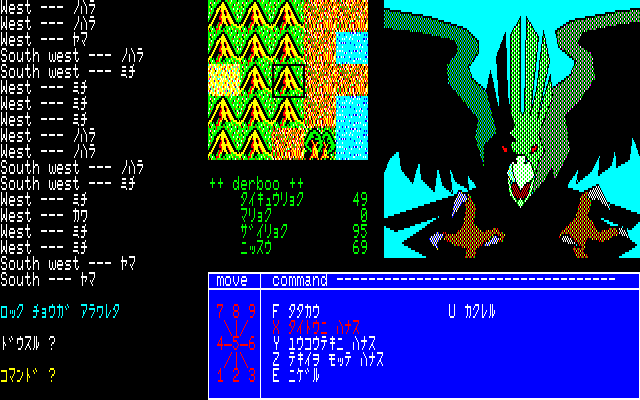
There is at least some evidence that Mugen was an inspiration for the creators of Dragon Quest. On that topic, it’s about time to speak about that.
What happened next? The release of Wizardry, Ultima and Dragon Quest
Eventually, Dungeons and Dragons, Ultima and Wizardry all received official Japanese releases which attained mainstream success, immersing the Japanese gaming culture in a new gaming experience. Among those swept along were manga writer Yuji Hori and game developer Koichi Nakamura, who were creating games for the NES at the time for Enix as the company Chunsoft.
The combination of Nintendo’s new console, and the love for RPGs shared by these creators, led them to create Dragon Quest. It won a raft of awards from Famitsu including game of the year, and it sold exceptionally well, lagging behind only some first-party Nintendo games and a few sports games for that year.
Dragon Quest was so successful that it became the new blueprint for Japanese RPG developers. All attempts up to that point culminated here, and most later attempts can be traced back here.
That’s what people mean when they say Dragon Quest was the first JRPG.
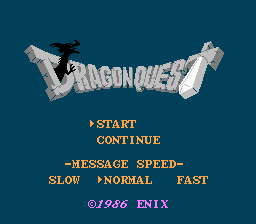
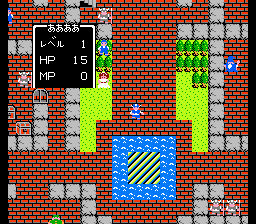
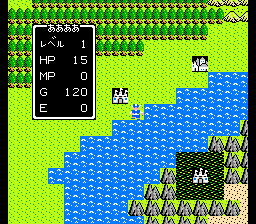

Further Reading
Want to know the first PS1 JRPG?
Image credits:
Thanks again to Hardcore Gaming 101 and Moby Games for cataloguing screenshots of these important games. See more here:
- mobygames.com/game/1209/wizardry-proving-grounds-of-the-mad-overlord/screenshots/
- blog.hardcoregaming101.net/2013/04/dark-age-of-jrpgs-dragon-princess-1982.html
- hardcoregaming101.net/danchizuma-no-yuuwaku-dark-age-of-jrpgs/
- hardcoregaming101.net/some-games-we-cannot-play-dark-age-of-jrpgs/
- blog.hardcoregaming101.net/2013/06/dark-age-of-jrpgs-6-panorama-toh-pc-88.html
- hardcoregaming101.net/ken-to-mahou-sword-sorcery-dark-age-of-jrpgs/
- hardcoregaming101.net/dungeon-dark-age-of-jrpgs/
- mobygames.com/game/18757/the-black-onyx/screenshots/
- mobygames.com/game/19625/the-tower-of-druaga/screenshots/
- mobygames.com/game/18618/dragon-slayer/screenshots/
- blog.hardcoregaming101.net/2014/06/dark-age-of-jrpgs-11-mugen-no-shinzou.html
- mobygames.com/game/9223/dragon-warrior/screenshots/
Sources:
Derboo’s introduction’s to these games originally posted at the Hardcore Gaming 101 blog were absolutely vital for this article. Find more from Derboo here: hardcoregaming101.net/author/derboo/.
The J-RPG Wiki had surprisingly detailed explanations of how some of these games are played. I think my research for this article pushed little known games into the trending pages for the site:

Several of these early titles were developed and/or published by Koei, and the Koei Tecmo Wiki was very helpful for cross-checking information.
Other articles and forum threads that helped in small and large ways:
- rpgcodex.net/forums/threads/1982-1987-the-birth-of-japanese-rpgs-re-told-in-15-games.111396/
- shmuplations.com/xevious/
- shmuplations.com/yoshiokiya/
- felipepepe.medium.com/1982-1987-the-birth-of-japanese-rpgs-re-told-in-15-games-558bb2e7ca32
- retronauts.com/article/342/gaming-computers-of-japan-the-nec-pc-8800-series
